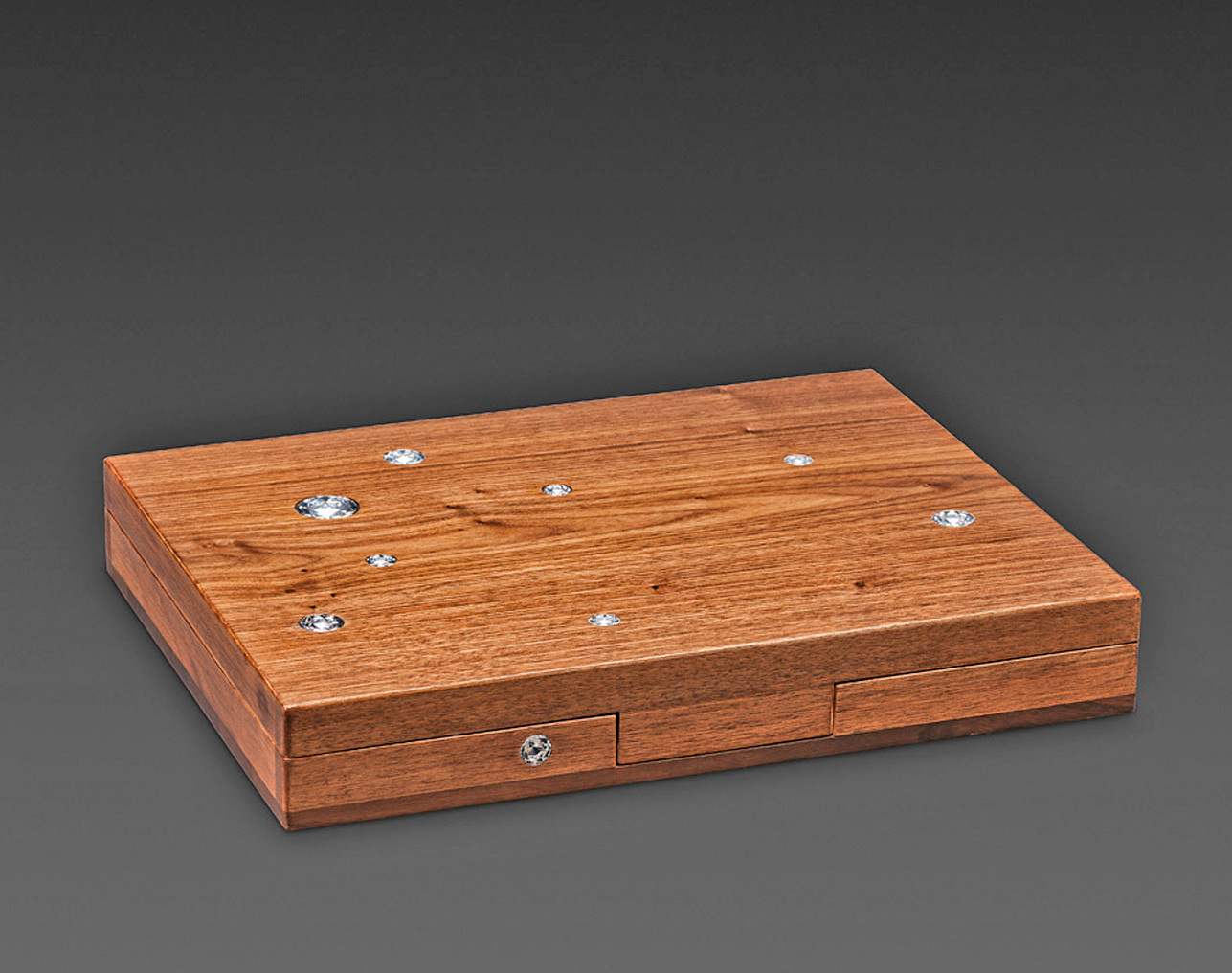
VETRI ROSA
Artists' book published in 2006 by Editions Take5 (Geneva).Original text written for the book in Italian by Ornela Vorpsi,
translated into English by Ann Gagliardi, and into French by Yann Apperry
7 original signed color photographs, specially created by Mat Collishaw
to illustrate Ornela Vorpsi’s text
Folded leaflets, embossing, cutting, and photoluminescent patterns on glassine sheets
Traycase designed by Philippe Cramer,
walnut with inlaid crystals of varying size, title printed with a hot iron
Graphic design by Philippe Millot
Each copy is signed by Mat Collishaw, Ornela Vorpsi,
and Philippe Cramer An edition of 50 copies - 11.8 x 15.3 x 2 inches
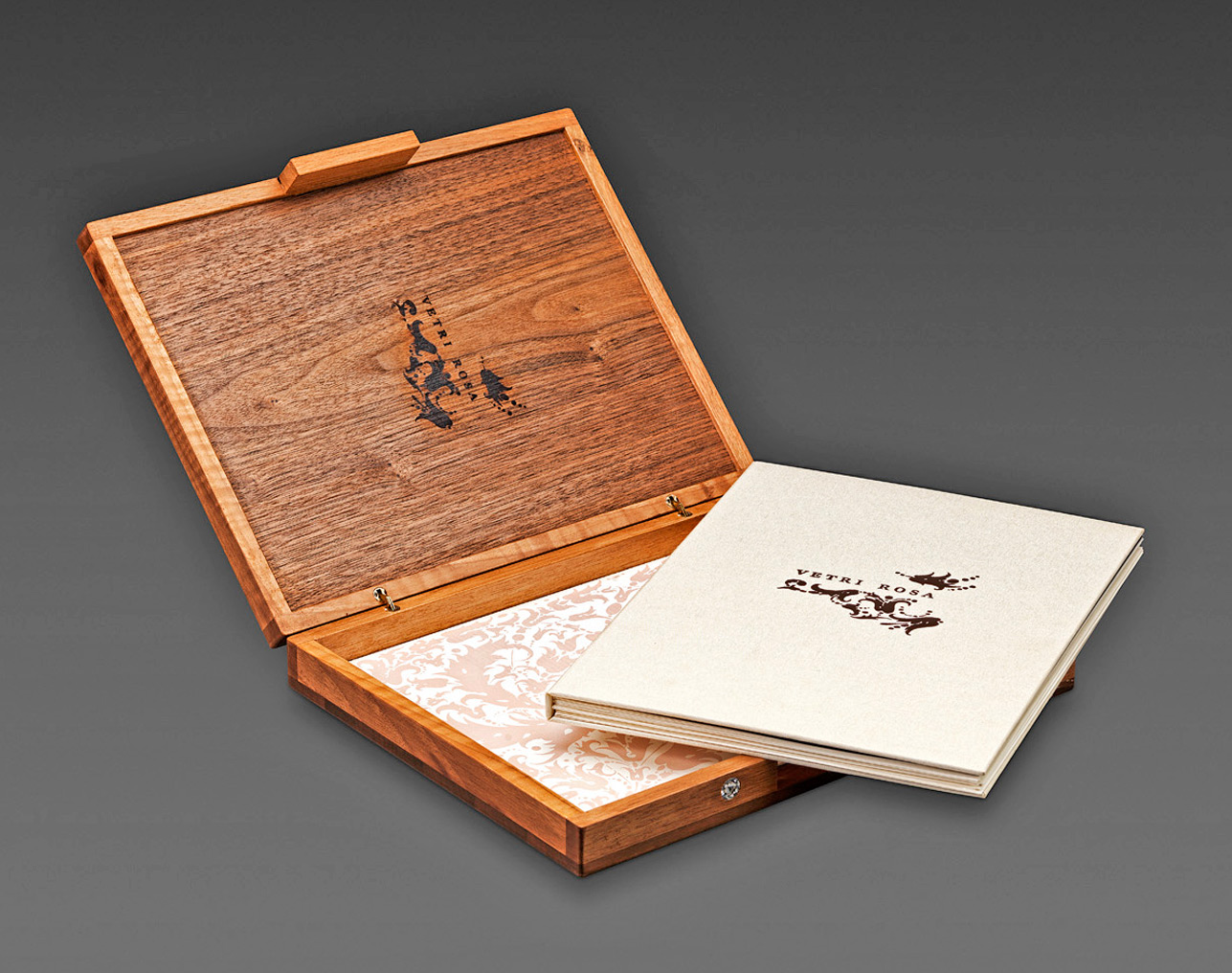
The housing of the book, created by Philippe Cramer in perfect harmony with the sensibilities of both the writer and the artist, plays with the contrast between the harshness of solid wood and the purity of crystals, which represent two diametrically opposed facets of carbon. It symbolizes the evolution of a human being, from innocent child to polished adult. The crystals refer to “vetri rosa,» the small pieces of broken glass through which the heroine of the text examines her life as the prism of a kaleidoscope.
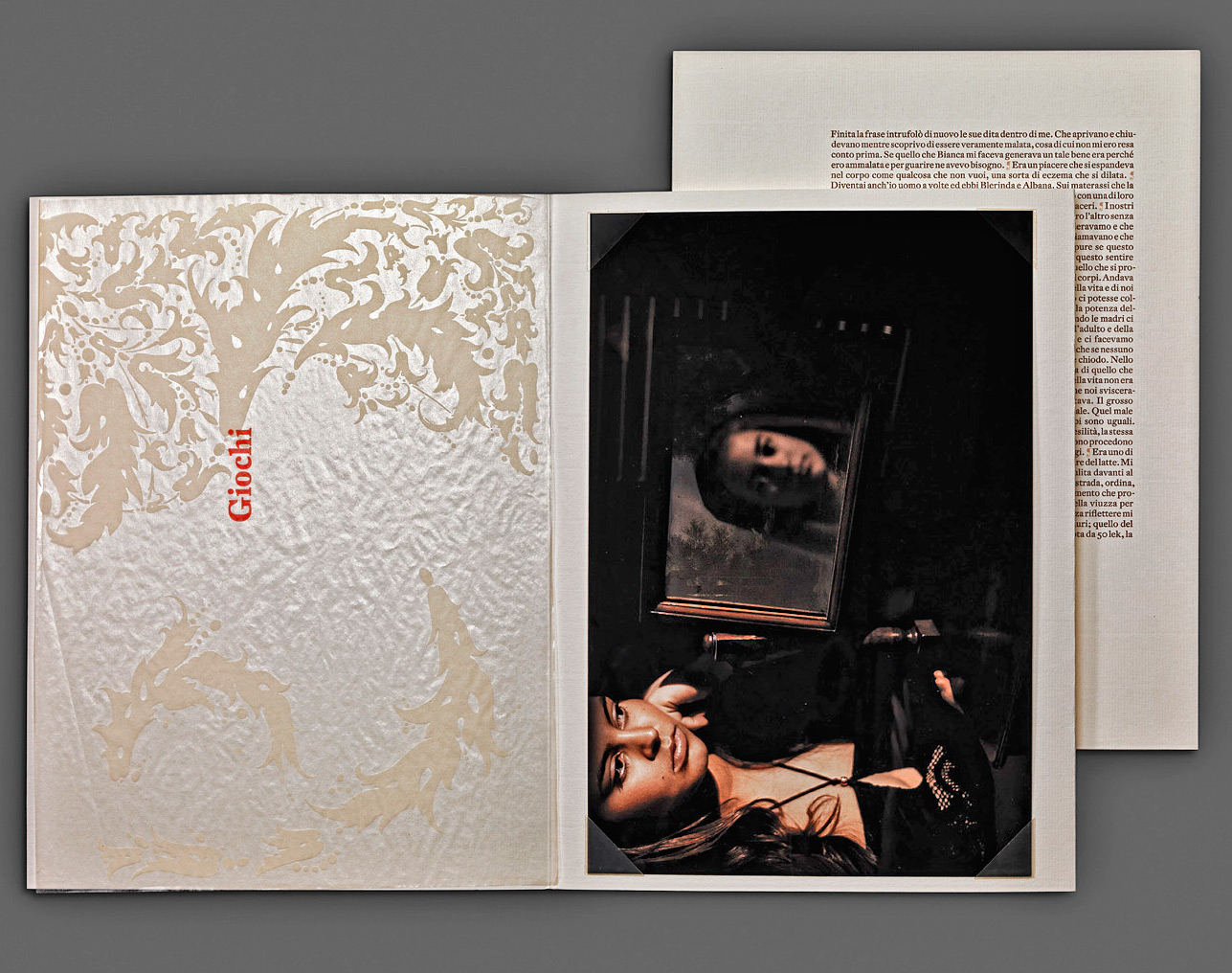
In the book Vetri Rosa, the British photographer Mat Collishaw and the Albanian writer Ornela Vorpsi intertwine in a very sensual way their philosophical approaches to life and death, innocence and beauty. It is a tale of initiation, evoking the relativity of time and space as it relates to consciousness. The young heroine of Vetri Rosa perceives life through the filter of a kaleidoscope–formed by bits of pink glass shards–and manages to dissect its mechanisms with the insight and wisdom of a far-off look. With great clarity and poetry, she captures and describes moments of familial intimacy, love, and friendship. Very early in life these moments make their mark on our consciousness, and evoke the loss of a certain innocence. Vetri Rosa explores the “beautiful and poetic childhood wandering, the evil and violence of everyday life.”
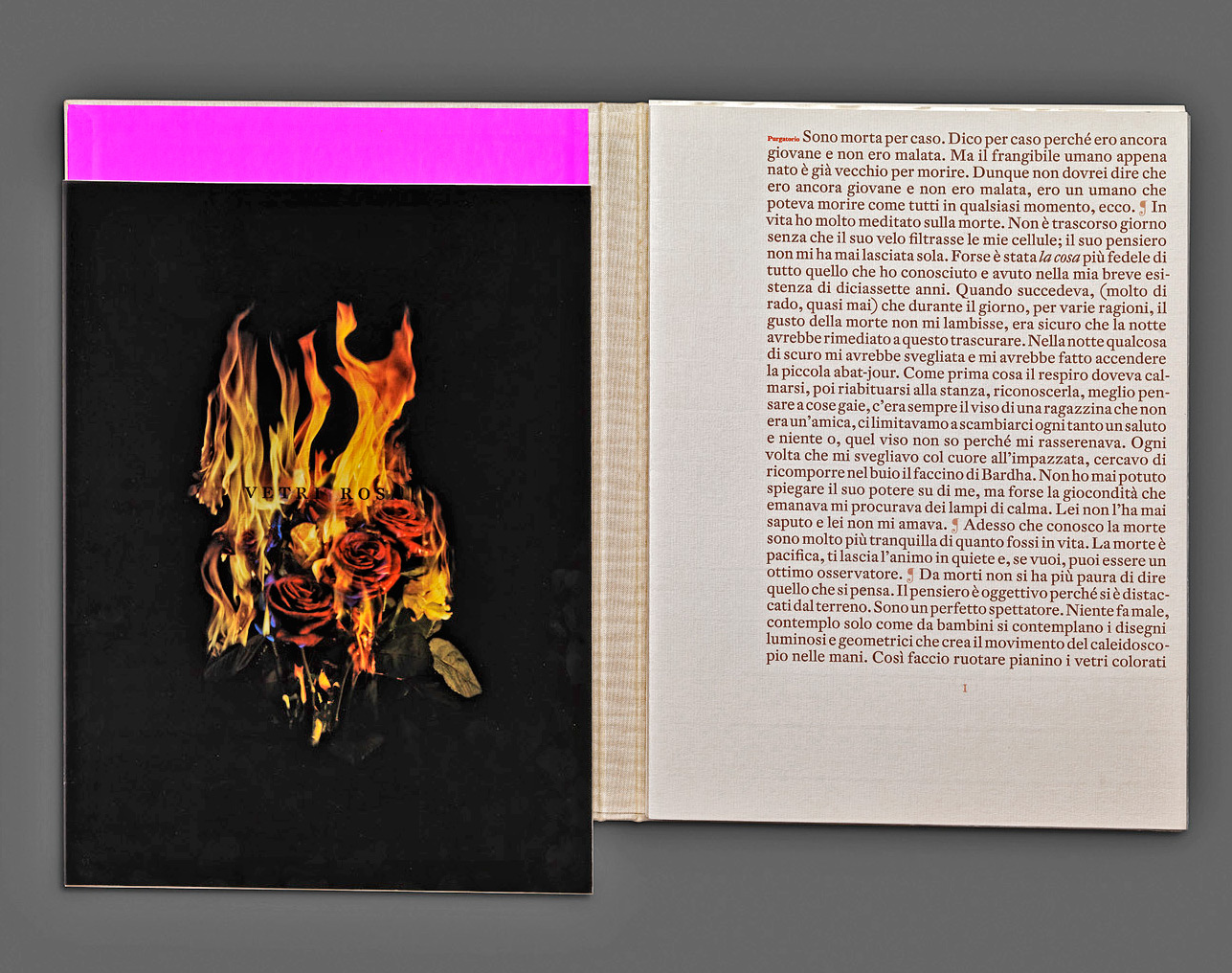
Mat Collishaw imagined a visual story resembling a rite of passage to illustrate Ornela Vorpsi’s text with his photographs. Inspired by the chiaroscuro of Flemish paintings and the contained atmosphere of the Victorian era, the artist blurs temporal borders and grafts a poisonous beauty onto contemporary preoccupations. For Vetri Rosa, he photographed two girls whose melancholic beauty hides a dramatic and metaphorical burden. Each photograph is an allegory, and refers in a poetic way to such themes as freedom, self-awareness, friendship, and eroticism. Where do we draw the line between good and evil? where is the boundary between moral and immoral, the horror and the sublime? Mat Collishaw’s photographs reveal the ambiguity of life, radiating a sweetness and a poetry that contrast with some darkness and generate a real sense of probing. “I don’t seek provocation,» says Mat Collishaw, «but an expression of the sublime and the horror, the feeling that one gets when confronted with them, which shows a beauty that would not exist if ugliness were not there.”
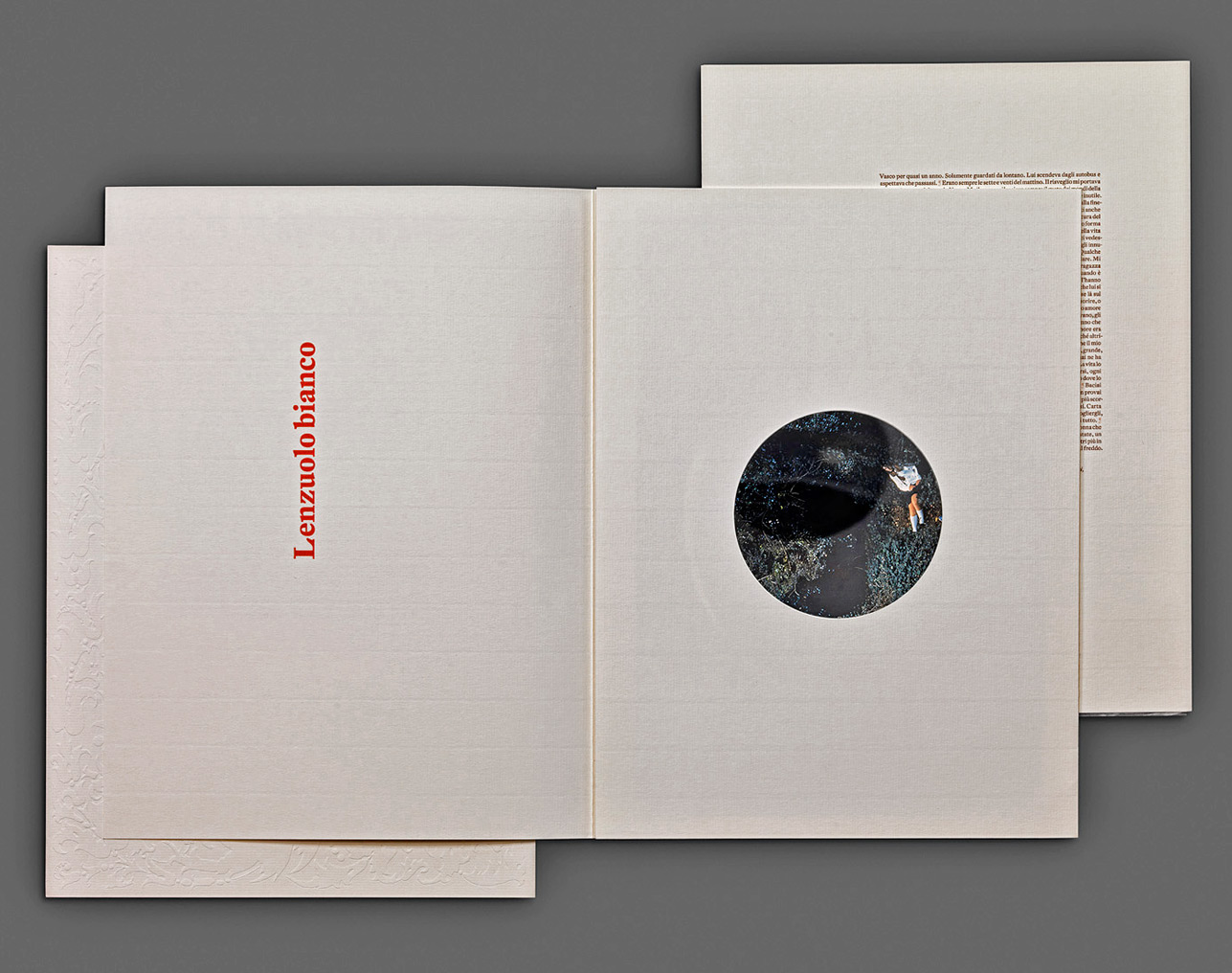
The graphic designer Philippe Millot transcribed this discomfort throughout the pages with different ideas and techniques : the typeface, of a rather classical and literary form in a somewhat ambiguous sepia color, shrinks over the pages, echoing the breath of the narrator stifled by anguish as her story unfolds. Patterns inspired by the Victorian era, an ambiguous epoch particularly dear to Mat Collishaw, were printed in photoluminescent ink on transparent paper. These fine paper sheets lie like a veil over Mat Collishaw’s images, casting a shadow on them as they only appear at first through a small circle cut in the paper. This circle represents a keyhole, making the reader feel like a voyeur and evoking the inflections of the Puritanism of the Victorian era. As the story progresses, the patterns on the transparent sheets get busier and busier until they invade the page in order to symbolize suffocation.
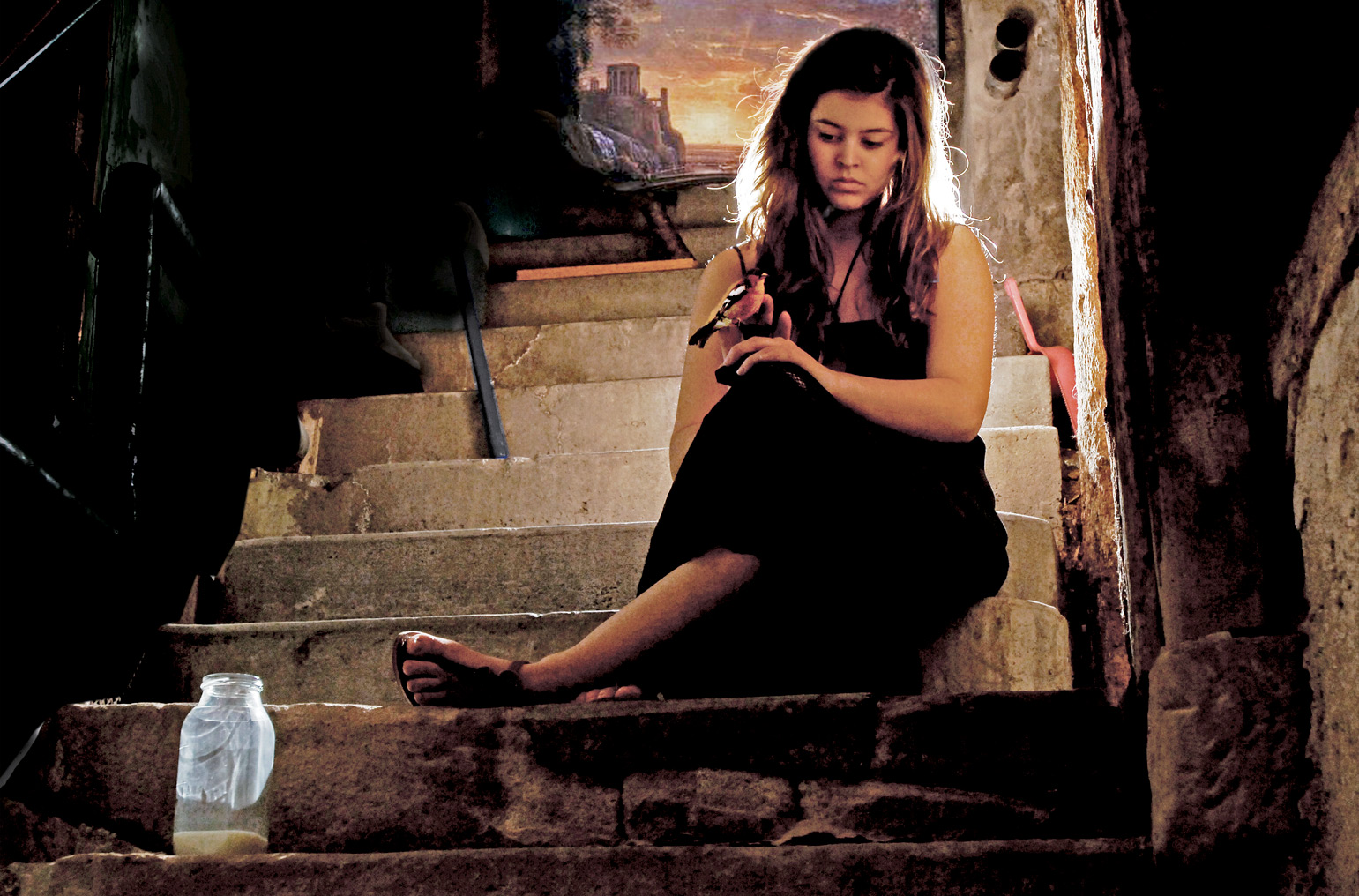
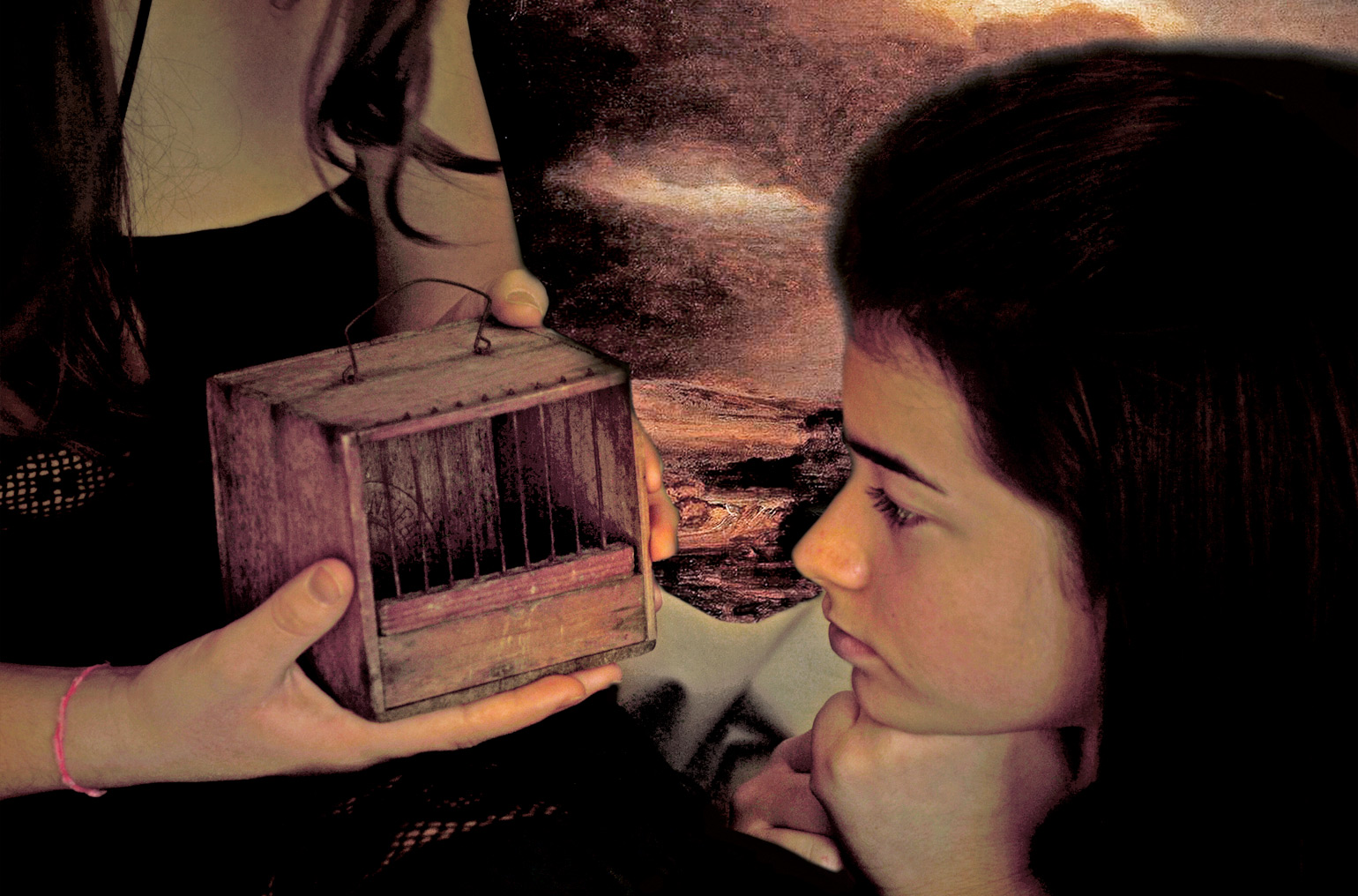
 FR
FR